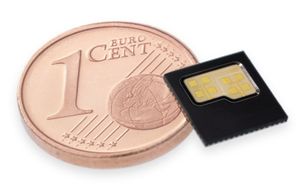Difference between revisions of "120 GHz Transceivers"
Jump to navigation
Jump to search
| Line 6: | Line 6: | ||
__FORCETOC__ | __FORCETOC__ | ||
| + | |||
| + | |||
| + | {| style="text-align:center; width:80%" | ||
| + | |style="background-color:#8FD341"|<span style="color: white">'''ISM-Band'''</span> | ||
| + | |style="background-color:#8FD341"|<span style="color: white">'''Status of IC'''</span> | ||
| + | |style="background-color:#8FD341"|<span style="color: white">'''Packaging Solution'''</span> | ||
| + | |style="background-color:#8FD341"|<span style="color: white">'''Series End-of-Line Test'''</span> | ||
| + | |style="background-color:#8FD341"|<span style="color: white">'''Antenna Solution'''</span> | ||
| + | |style="background-color:#8FD341"|<span style="color: white">'''Evaluation / Sensor'''</span> | ||
| + | |- | ||
| + | |style="width: 14%; text-align: left; padding-left: 1%; padding-right: 1%; vertical-align: top"| | ||
| + | *Single Channel Transceiver | ||
| + | *[[TRX_120_001]] | ||
| + | *[[TRX_120_002]] | ||
| + | |style="width: 14%; text-align: left; padding-left: 1%; padding-right: 1%; vertical-align: top"| | ||
| + | *In series production | ||
| + | *Dedicated mask set available | ||
| + | *Optimization of functionality and yield (cost) in progress | ||
| + | |style="width: 14%; text-align: left; padding-left: 1%; padding-right: 1%; vertical-align: top"| | ||
| + | *FAM-QFN (ready qualified after JEDEC; MSL) | ||
| + | *Packaging service in audited supply chain | ||
| + | *LGA-based FAM, Optimization of functionality and yield (cost) in progress | ||
| + | |style="width: 14%; text-align: left; padding-left: 1%; padding-right: 1%; vertical-align: top"| | ||
| + | *Available and qualified | ||
| + | *Fully automated testing in audited supply chain | ||
| + | |style="width: 14%; text-align: left; padding-left: 1%; padding-right: 1%; vertical-align: top"| | ||
| + | *Antenna in FAM-package (patented assembly solution) | ||
| + | *Antenna OnChip (in silicon, completely moulded) | ||
| + | *Printed antenna on PCB | ||
| + | *Reference patch antenna designs available | ||
| + | |style="width: 14%; text-align: left; padding-left: 1%; padding-right: 1%; vertical-align: top"| | ||
| + | *Available | ||
| + | *2nd generation of EvalKit in order to shrink production cost under way | ||
| + | |} | ||
Revision as of 09:11, 25 July 2019
We are offering two transceivers at 120 GHz: TRX_120_001 and TRA_120_002. There is a wideband version of the TRA_120_002 under development, called TRA_120_012.
| ISM-Band | Status of IC | Packaging Solution | Series End-of-Line Test | Antenna Solution | Evaluation / Sensor |
|
|
|
|
|
|
Contents
1 General
1.1 What is the difference between the two ICs?
- Both chips include send and receive antennas in a standard QFN package. The main difference lies in the antenna designs. While the TRX_120_001 uses tiny patch antennas on a separate "PCB" within the IC's package, the TRA_120_002 has its dipole antennas already included on the chip die. Therefore the packages are different in size and beam characteristics differ.
1.2 What is the minimum range or is there a blind spot?
- The minimum range is dependent on the selected bandwidth. 1 GHz bandwidth works from about 30 cm, 6 GHz works from about 7 cm.
1.3 Can something be detected below the minimum range?
- Going below the bandwidth-dictated minimum range leads to an increased DC-offset in the FFT output. It could be used to detect "something is nearby" but this is very application-specific.
1.4 What is the resolution of the chips?
- We define the resolution as the ability to separate two objects in range. The resolution is only dependent on the selected bandwidth. With 1 GHz bandwidth the resolution is 15 cm, 6 GHz equals to 2,5 cm resolution. In practice, target recognition works from twice the resolution.
1.5 What is the maximum range?
- The maximum range of our 120 GHz chips is always dependent on the target. Usually we can reach about 10 m without a lens and about 25 – 30 m with a lens.
1.6 Can I create a continous sweep of 6 GHz bandwidth?
- The radar frontends can be used in discrete channel mode by selecting channels via the coarse tuning inputs. Since the tuning inputs are just varactor diodes, it is also possible to connect all tuning inputs together to get the full bandwidth of 6 GHz.
2 Specification
What is the size?
- The TRX_120_001 is produced in a 8 mm x 8 mm QFN package. The TRA_120_002 comes in a 5 mm x 5 mm QFN package.

